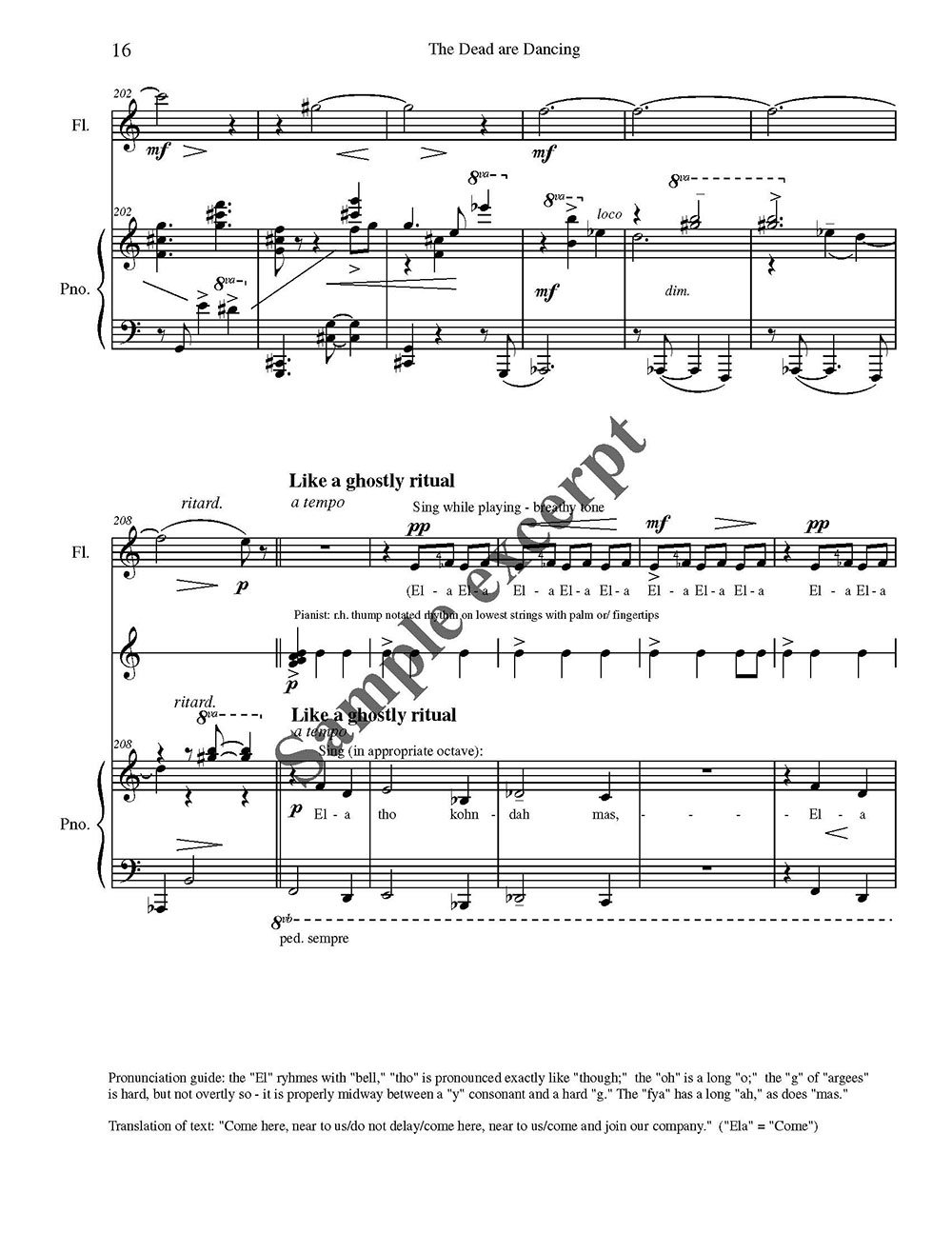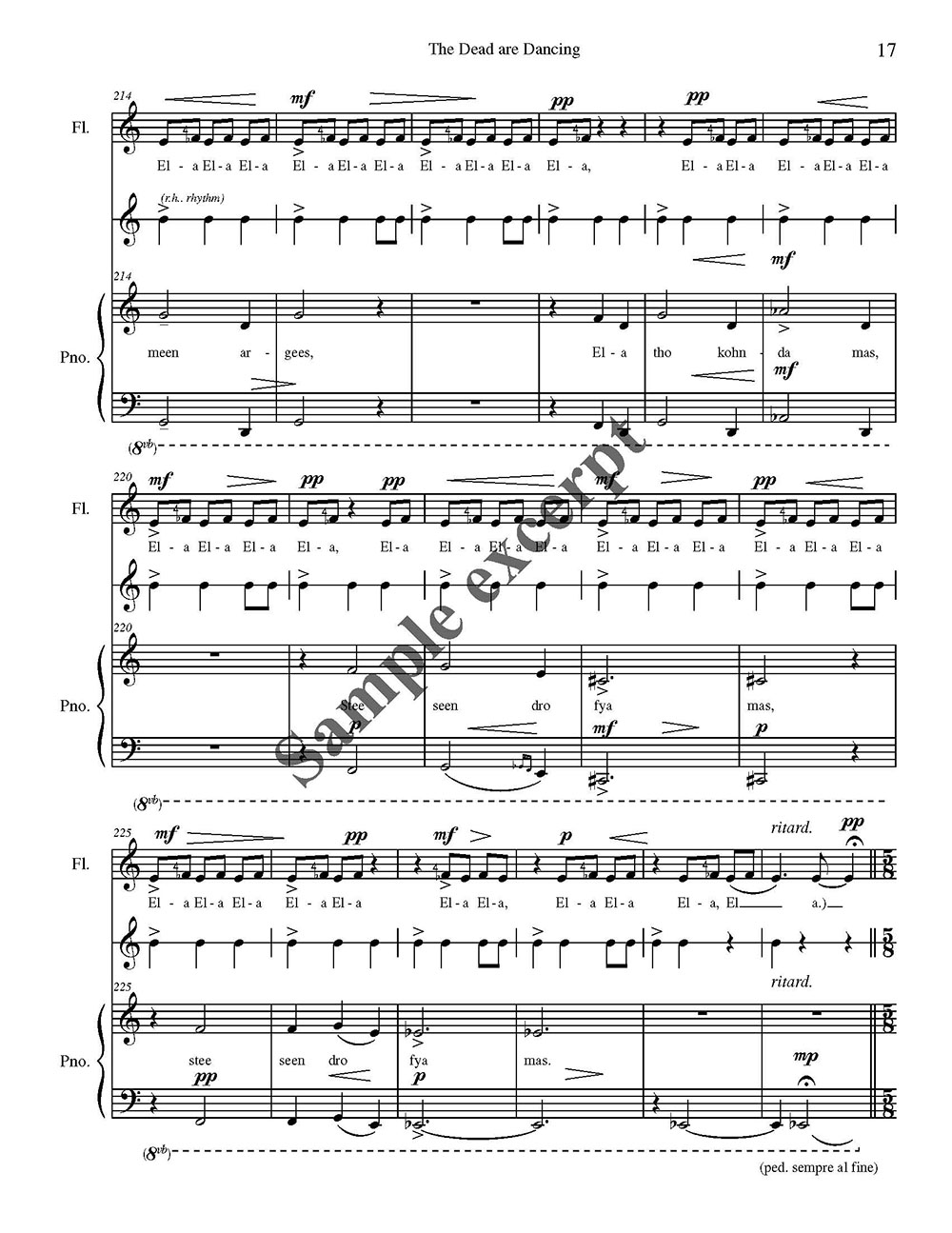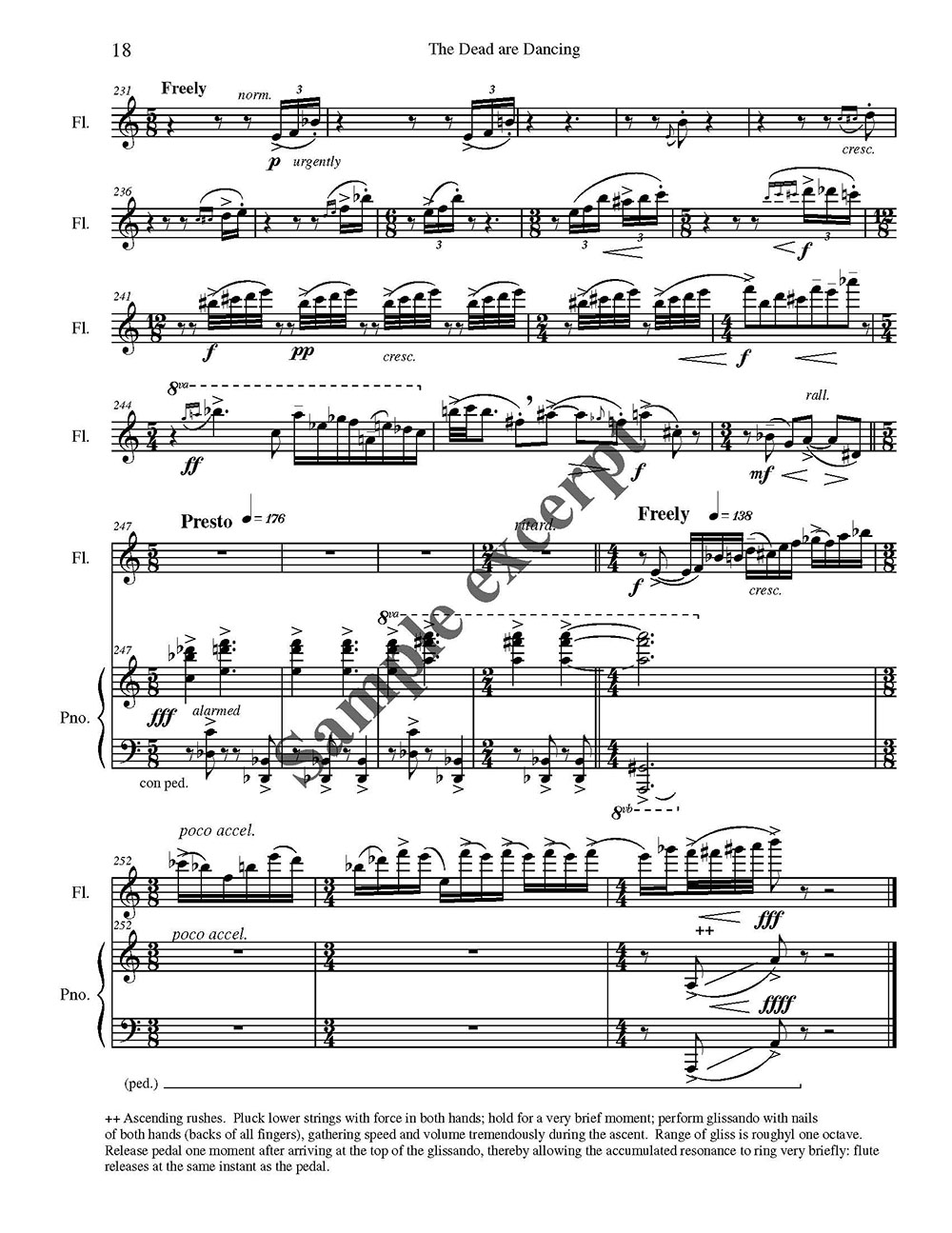The Dead are Dancing (2006)
for flute and piano, 13 minutes
Instrumentation
flute, piano
Premiere
Commissioned by flutist Nina Assimakopoulos, the work is based on a poem by modern Greek poet Constantine Hatzopoulos. The Dead are Dancing was premiered on September 22, 2006, at The Catholic University of America in Washington, DC, with Nina Assimakopoulos, flute, and Andrew Earle Simpson, piano.
Performance Notes
The flutist is required to play multiphonics in several places; exact fingerings will vary, but should approximate the general timbral qualities described in the score.
Beginning in m. 210, the flutist is asked both to play and sing the word "Ela."
Grace notes must be played as quickly as possible throughout the score.
Listen
The Dead are Dancing (excerpt)
Program Notes
When flutist Nina Assimakopoulos asked me to write a piece for her in fall 2005, I was very pleased to have the opportunity to compose a new work for this tireless champion of contemporary American music. As our conversations about the proposed piece developed, we discovered a shared interest in cross-disciplinary performance and the intersection of music with other arts, which led this project in a particularly fruitful direction.
As part of the fall 2006 concert for which the piece was originally composed, Nina had conceived of a multimedia program entitled "Convergence," featuring musical works directly inspired by literature in many languages and from many countries, as well as supplementary video and audio components. An additional factor to consider, then, in keeping with the overall tone of the proposed program, was to create a work which was ritualistic and nocturnal in tone. The moon was a prominent theme in the concert program, and so this image became important to the conception of the piece. In searching for poems which harmonized with this general idea, I discovered a poem by the modern Greek poet Constantine Hatzopoulos (1871-1920). Although Hatzopoulos is not among the most famous of Greek poets, his beautiful poem, "The Dance of the Shades," suited the program perfectly. The speakers in this poem are the souls of the dead, who invite the reader to ignore the starlight, and the songs of the nightingales, and join them in their unending, slow dance.
Many coloristic effects are employed in this piece to create the aura of mystery and strangeness evoked by the poem: the flutist sings while playing, is asked to play multiphonics (which create complex sounds which are not quite chords), and the pianist beats, strikes, and strums the inside strings of the piano. Near the end of the piece, the prime moment of ritual arrives: the pianist plays a drum-like repeating pattern on the strings of the instrument while singing the refrain of the poem, to its original Greek text:
Έλα δω κονtά μας,
Έλα μην αργής,
Στη σuντροφιά μας.
[Come here to us, do not hesitate; come to join our company (trans. A. Simpson)]
The flute, meanwhile, plays a two-note repeating pattern while continually singing (at the same time) the first word of the poem’s refrain, "Ela (come)," as an incantation.
The melody which sets the above lines is prominent throughout the piece. The general mood of The Dead are Dancing is slow, eerie, and somber, but moments of alarm and fear (such as the piece’s powerful opening) punctuate this.
—Andrew Earle Simpson


